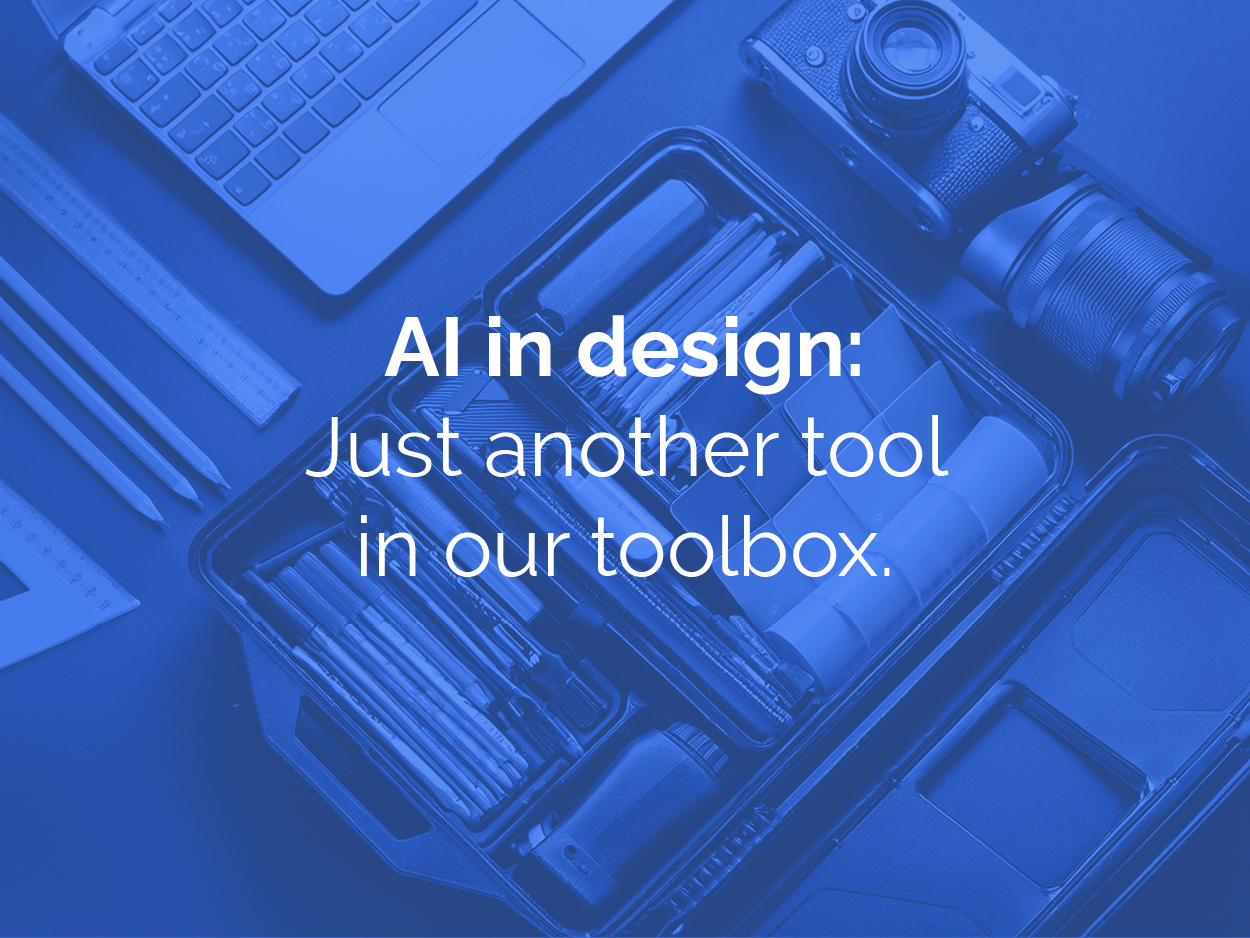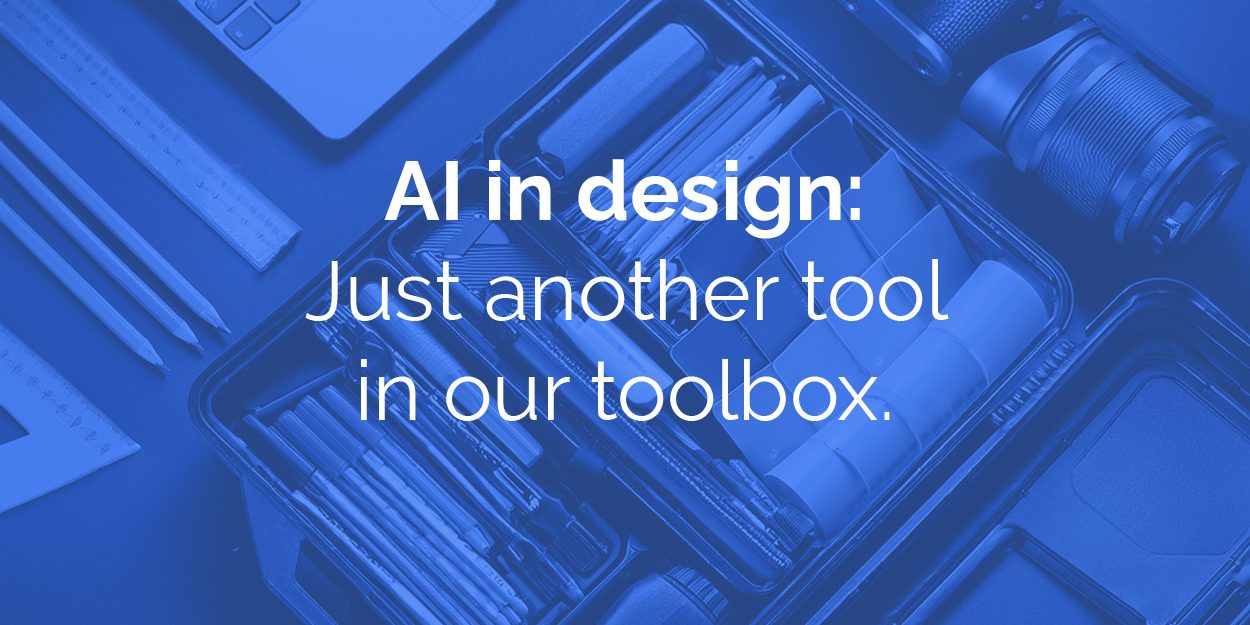Collective: AI in design: Just another tool in our toolbox.

The design industry has always been in flux. From hand-drawn layouts and typesetting to digital design software, the tools we use have evolved dramatically. And now, AI is stirring up conversation, curiosity, and yes, a bit of fear. But for those of us who’ve been around the block, this moment feels familiar and rather than fear, it’s about cautious excitement.
We often use the analogy of Canva. When it first launched in 2013, many predicted the downfall of the design industry, ‘everyone will be able to do it themselves,’ we were told. And in a way, they were right people can create their own graphics now, and for small businesses or individuals without the means to engage an agency or graphic designer, that’s a great thing.
But there’s a downside. Canva—and tools like it—have fostered a false sense of mastery, leading many to believe that design is easy, formulaic, and purely aesthetic. The result is an undervaluing of the creative process. Good design is not just about making something look attractive; it’s about strategic thinking, visual hierarchy, negative space, brand storytelling, and emotional impact. When people assume that dragging and dropping elements on a template makes them a designer, it diminishes the depth, skill, and intention that true design requires, and ultimately leads to bad content in the market.
But here’s the thing, for the design industry, Canva didn’t take away our jobs—it just gave us a new tool. We still use Canva today to support, enhance and manipulate our work where it makes sense. It’s quick, flexible, and collaborative. It didn’t replace good design nor does it provide strategy. We develop original designs and use Canva as one of many tools to modify and execute marketing assets and deliverables.
AI is no different.
What we’re seeing now is another shift. AI tools are changing the way we brainstorm, test, and build concepts. The depth of what these platforms can do is incredible—especially when it comes to generating inspiration, rapidly iterating on visual styles, or even manipulating existing assets in new ways.
AI is a tool. It’s not the process.
At the heart of every great piece of design is strategy. Before anything visual is created, we work closely with clients to uncover their brand’s story, values, audience, and goals. We define their visual identity, brand personality and tone of voice. Only once that foundation is in place do we begin crafting a tailored design response. This part can’t be skipped, otherwise its not what we call ‘considered’ design.
Yes, we’re seeing a surge in AI-generated content—both in visual design and written communications—and much of it looks and feels eerily similar. That’s because it’s often created without a clear process grounded in strong brand foundations. Effective design and messaging require a deep understanding of the many factors including market landscape, audience psychographics, and shifting cultural influences—something AI can’t replicate on its own. The brands that will truly stand out in the future are those that use AI as a tool, not a substitute—enhancing creativity, not replacing it.
When AI is used without direction or depth, the result is usually surface level. But when it’s guided by a clear brief, backed by insight, and shaped by a skilled designer—it can be transformative.
At Sidedoor, our approach hasn’t changed. We still start from scratch. We take pride in crafting original, strategic, client-focused design solutions. What has changed is that now, we have more tools than ever to explore, test, and evolve ideas. That’s exciting.
The design industry is forever evolving and is shaped by many influences, from market landscape and design trends to innovation and culture. Just like we embraced Canva, every leap forward in design technology before this—AI is simply the next tool in our ever-growing tool belt. Watch this space…


